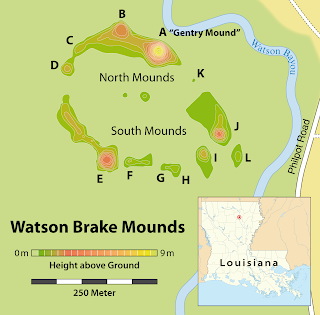The Midwest vs. San Francisco
The Midwestern United States is often called "the heartland", and is the region that is most associated with the myth of the idyllic American farm, such as the one sung about in the children's song, "Old McDonald Had a Farm". However, it has now adapted to a postindustrial economy, and the management of farms is vastly divergent from the ideal of the family farm of the past.
(en.wikipedia.org)
Midwestern state license plates (circumambulatetheworld.blogspot.com)
History's Effects on Demography & Settlement
Adena, Cahokia, Hopewell, Woodland Period Iroquois, and Huron inhabited the area for more than 12,000 years until the Mississippian period. The Mound Builders practiced agriculture and traded with other tribes. The mounds were built for ceremonial purposes. The Great Lakes Iroquoi consisted of the Hurons and the New York League of Five Nations (The Seneca, Cayuga, Onondaga, Oneida, and Mohawk). The Iroquois were not nomadic and disputes among tribes occurred in the area.
Mound culture's ceremonial mounds (en.wikipedia.org)
The area was largely inhabited by German immigrant farmers. Though the architecture associated with the ethnic group, the barn, is a pinnacle of the Midwestern culture, today, most have been replaced with concentrated animal feeding operations, (CAFO), or uniform size pole barns. Similarly, the Spanish colonialists have imprinted the landscape of San Francisco with their legacy of mission style religious architecture and pueblo style edifices.
Quintessential Midwestern Red Barn (artistsnowemerging.blogspot.com)
CAFO animal feedlot (www.epa.gov)
Economy
The economy of the Midwestern United States has traditionally and still remains largely dependent on the agricultural sector, though major changes have been made to the ways the industry is now conducted. The interior traditionally attracted family farmers who subsisted by living off of the land, while industry thrived near watersheds. Rural decline has been caused by the increasingly gigantic costs of farming, low returns, and international competition. Though technological advances have increased the supply of food in the nation, farmers have scarcely benefited from them. The Green Revolution, which took place in the 1960s, greatly increased crop production, while increasing the need for harmful fossil fuel-based fertilizers. Genetically modified seeds have revolutionized the current state of the agricultural industry, but this too, has raised ethical concerns. Most farms are now contract farms and very few are family farms, though there is a niche market for sustainable agribusiness with healthier outputs free of GMOs. Soybeans, apples, cherry, wine, beef, hogs, chickens, and dairy are produced in the region. Though Chicago and Detroit were once industrial centers, factories have largely shut down, and were hit hard by the 2008 economic recession, when two of the "Big Three" automobile companies, Chrysler and GM declared bankruptcy. Native American tribes have benefited from the legalization of gambling in the area, and though business is thriving, it is believed that tribal integrity is compromised due to the industry. San Francisco, like all financial centers was also affected by the Economic Recession, though perhaps not as gravely as the automobile industry of the Midwest.
Chrysler shut-down of 2009 (www.freep.com)
Midwestern Casino (www.resortsandlodges.com)







No comments:
Post a Comment